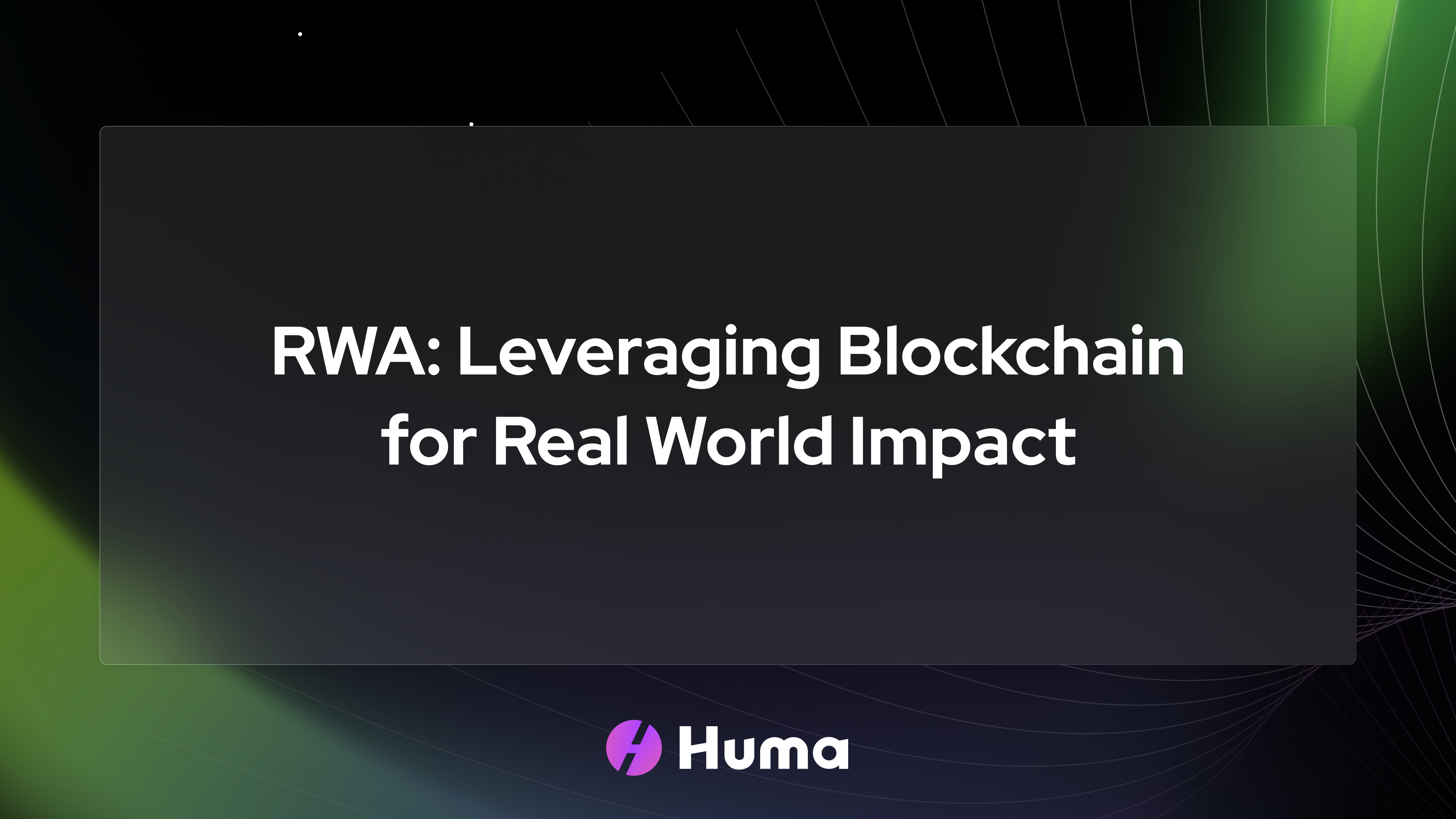Welcome to my series of blog posts on Real World Assets (RWAs). In this first post, we'll define what RWAs are, explore examples of tokenized assets, and answer the most critical question: Why RWAs?
RWA Initiatives: Bridging Blockchain and Traditional Finance
Larry Fink, the CEO of BlackRock, shared his views on where blockchain technology is heading at the New York Times’ 2022 Dealbook Summit, saying “the next generation for markets, the next generation for securities, will be tokenization of securities.”
Larry is not alone. Despite the crypto winter in 2022 and 2023, we have witnessed an influx of traditional finance giants and startups alike leveraging blockchain technology for asset tokenization. Let’s look at some key examples:
- Franklin Templeton's Tokenized Treasuries: Franklin Templeton made a significant move by tokenizing over $300 million of its U.S. Government Money Fund, showcasing how blockchain can streamline operations and create a global marketplace for assets with immediate liquidity.
- ABN AMRO's Tokenized Corporate Bond: ABN AMRO issued a €450,000 bond, a noteworthy instance of corporate bonds entering the blockchain space.
- Real Estate Tokenization: RealT and Roofstock onChain lead in real estate tokenization, providing fractional investment opportunities and revolutionizing property investment.
These examples reflect the growing integration of RWAs in both crypto and traditional finance, signaling a new era of financial inclusivity and efficiency.
What are RWAs and which assets are included?
RWAs are tangible or intangible assets from the traditional financial world that are tokenized on a blockchain. This includes but isn’t limited to:
- Treasury bills
- Public equity
- Shares of private companies
- Bonds and public credit
- Private credit
- Real estate
- Artwork
- Commodities like gold or oil
Tokenization is the process of converting the ownership or value of these RWAs into digital tokens on a blockchain. By tokenizing the assets, they become digital representations, making them accessible and tradable on blockchain networks.
Some assets are better suited than others to be tokenized, but technically nothing stops one asset class from being tokenized. Some will be moved on-chain earlier than others, for example, Treasury Bills tokenization welcomed massive expansion in 2023 because it addressed a need for crypto treasuries to access T-bills’ healthy yield.
Why RWA? The Value Proposition
Enhanced Accessibility
Many high-potential investment opportunities are currently out of reach for numerous investors. My experience, for instance, with the challenges of investing in Indian stocks due to market barriers is not unique. Similarly, the high investment thresholds required by elite VCs and Hedge Funds exclude most average investors. Even opportunities in high quality debts, like those offered by my former employer EarnIn, are usually reserved for large private equity firms. RWAs, however, are transforming this scenario by democratizing access to previously exclusive markets, a change exemplified by initiatives such as Goldman Sachs’ GS DAP's €100M digital bond issuance.
For asset originators – both businesses and individuals seeking capital – RWAs open up transformative avenues. Traditional capital-raising methods, often hampered by geographical restrictions, high entry costs, or stringent regulatory demands, particularly affect FinTech startups. The collapse of Silicon Valley Bank exemplifies how these already limited options have become more constrained. As a result, some companies with high-quality receivables and a strong financial outlook struggle to secure credit, as banks may not fully understand their business models. RWA tokenization offers these originators access to a global capital pool, broadening their investor base. This is particularly advantageous for SMEs, startups, and niche projects, which often face barriers in traditional financing due to a lack of collateral or resources. For example, Huma has fueled the growth of Arf, Jia, Rain, BSOS, and impactMarkets by connecting them with global investors.
Increased Efficiency and Cost-Effectiveness
RWAs also significantly enhance the efficiency of investment processes. The incorporation of blockchain technology into these processes automates and streamlines various operational aspects, such as compliance checks, settlement processes, and investor onboarding, minimizing human error and expediting the entire workflow.
An additional advantage is the reduction of transaction costs. RWAs, by eliminating the need for numerous intermediaries involved in conventional investment transactions, considerably reduce expenses for investors. This cost-effectiveness, coupled with the efficiency gains highlighted in a recent McKinsey & Company research report, shows RWAs’ potential to improve market efficiency.
Moreover, blockchain technology's inherent features facilitate secure, immediate settlements, enhancing liquidity and reducing the delays typically associated with asset transactions. This not only saves time and resources but also brings an added layer of transparency and security to investment processes. The growing adoption of blockchain by leading financial institutions and the increase in digital bond issuances, as noted by S&P Global Ratings, further attest to the efficiency gains afforded by RWAs.
In conclusion, the primary value of RWAs lies in their ability to forge new paths for both investors and asset originators, democratizing access to capital and investment opportunities, boosting efficiency and reducing cost along the way. The integration of blockchain technology with real world assets paves a way for it to transform our experience with finance in the real world.
[Next Topic: Tailwinds for RWAs]
